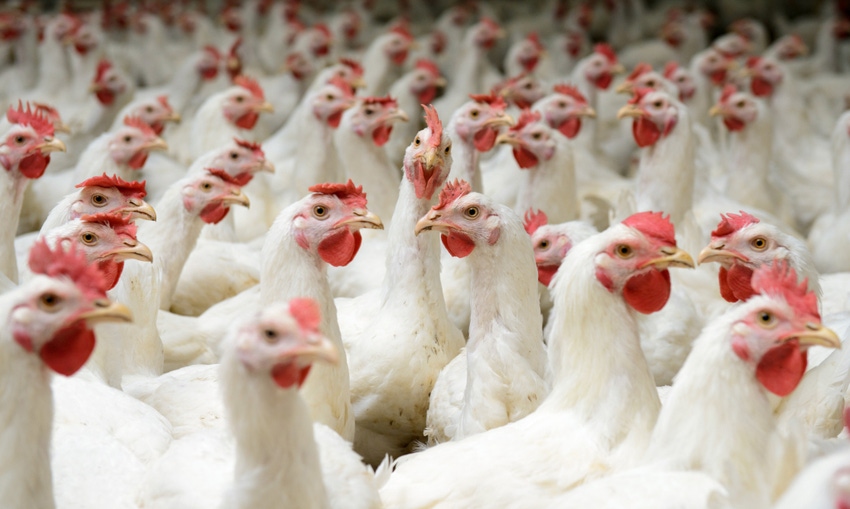COVID-19, ASF to shake up global poultry markets
Rabobank says first-quarter perspective for upside potential in global markets later this year remains unchanged.

As with most commodity markets right now, the outlook for global poultry in 2020 will be affected by the current COVID-19 pandemic. Add in the ongoing African swine fever (ASF) challenges in the pork industry, and there are layers of complexity in the global markets, according to the new "Q2 2020 Poultry Quarterly" report from the RaboResearch Food & Agribusiness team.
The situation continues to unfold, but the team expects a further drop in pork production in Asia this year, which it said could lead to potential growth in local poultry production and international trade, if rising supply chain challenges can be managed. A global economic slowdown could also benefit poultry demand due to its price competitiveness. In other words, Rabobank said its first-quarter perspective that there will be upside potential in global markets later this year remains the same.
“In terms of markets, we expect more at-home poultry consumption and higher sales of non-perishable poultry products,” said Nan-Dirk Mulder, senior global specialist of animal protein for Rabobank. However, he noted that labor availability and logistics issues, such as those affecting distribution, will likely affect supply in the coming months. COVID-19 is also expected to affect the global supply of poultry inputs, like feed additives and animal health products, due to disruptions at Chinese and other suppliers.
Overall, the changing economic and market conditions brought by the COVID-19 pandemic will have significant impacts on global poultry in 2020.
“Global trade will face more volatility this year, with both destinations and origins affected as well as pricing," the report said. "Total volumes are likely to be affected temporarily, and trade should ultimately benefit from local supply issues related to coronavirus, ASF and avian influenza.”
The bank anticipates the biggest coronavirus-related issues to be potential shocks in supply and demand driven by quarantine and logistics issues and temporary changes in consumer demand toward at-home consumption, non-perishable products, etc. “As this could impact supply and demand, it has the potential to also impact global poultry markets and pricing,” the report said.
Rabobank’s current view is that global economic growth in 2020 will slow to 1.6%, down from 2.9% in 2019, and will recover to 3.2% in 2021. China will see more acute impacts, with growth for 2020 expected at 2.4%, down from 6.1% in 2019.
The good news is that the number of new coronavirus cases in China has slowed, but the bad news is that outbreaks in the rest of the world will continue to expand in the first half, Rabobank relayed.
“The global economic slowdown will impact consumer confidence and behavior -- and, indirectly, animal protein markets and supply -- through 2020. While Rabobank forecasts the world to return to economic growth in 2021, some supply chain issues could have longer-term impacts on supply and demand,” the report said.
U.S. production exceeding expectations
Specific to the U.S., Rabobank said chicken production continues to exceed expectations, up 7.8% year over year (YOY) through mid-February. The increase has made it difficult to get much traction on prices, the bank said, with composite chicken down 8.8% YOY.
According to the report, boneless breast meat prices are particularly disappointing, averaging 12% lower YOY through the first quarter.
“Prices have stabilized and moved higher in recent days as retail and foodservice interest has been piqued and is expected to remain strong through the year,” Rabobank noted. “We expect boneless prices to strengthen in [the second half of] 2020 on lower production.”
Larger supplies have been less disruptive for wings (up 2.5% YOY in value) and leg quarters (up 39% YOY in value), the report said, adding, “Both products started the year well ahead of year-ago levels but have weakened since early February.”
Further, Rabobank said the disruption in exports due to COVID-19 during what was expected to be a strong period for exports has made burdensome inventories even more challenging.
Prices on dark meat and paws have relatively stable, but any upside could be limited until there is improved visibility on exports, the report suggested. Likewise, Rabobank said wings prices are relatively flat and will now miss the expected seasonal movement around the college basketball tournament season.
Overall, Rabobank expects to see first-quarter production growth (currently up 5% on slaughter and up 2% on weight) to slow in the second half of 2020, as the industry laps recent expansion.
Based on current placements, the analysts project 4.8% growth in production in the second quarter but more modest 3% growth in the second half of 2020. Key to the outlook, however, is an improvement in exports and minimal impact from COVID-19 on global economies, the report said. Further, it noted that domestic support for chicken at retail and foodservice is good on depressed prices but could weaken on heavier supplies of pork (up 5.1% YOY through the first quarter of 2020) through the summer.
About the Author(s)
You May Also Like



.png?width=300&auto=webp&quality=80&disable=upscale)

